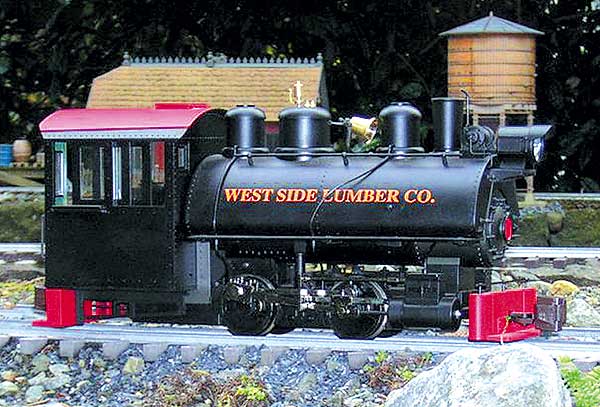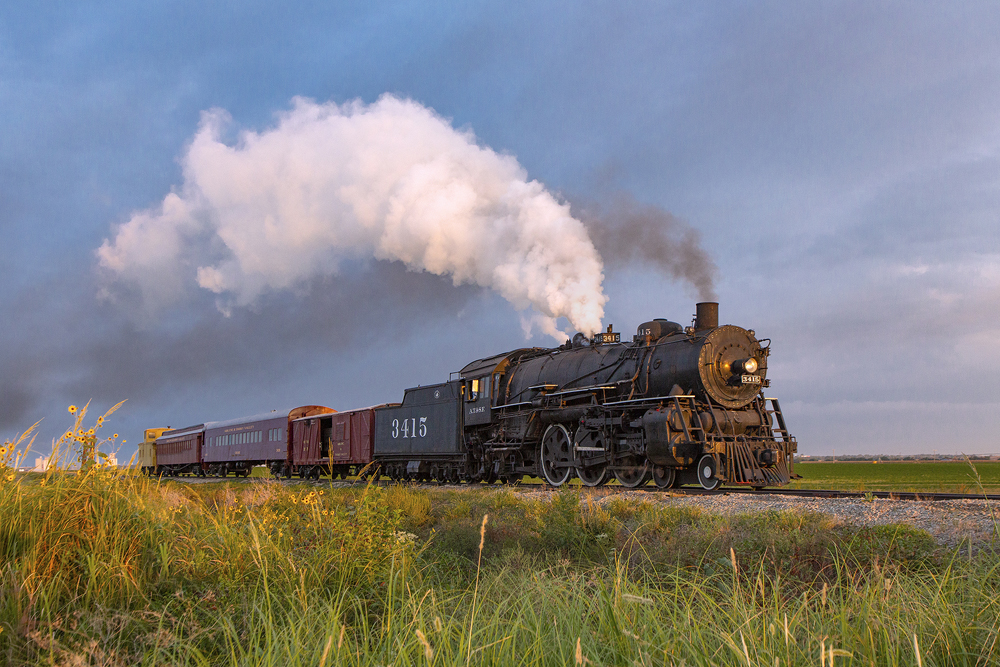1:20.3 scale, gauge 1, 0-4-0 saddle-tank Porter
Bachmann Industries
1400 E. Erie Avenue
Philadelphia PA 19124
Price: $179.95
Web site: www.bachmanntrains.com
Plastic-and-metal model of a Porter saddle-tank 0-4-0 locomotive (#82097 ); no assembly required. Dimensions: Beam to beam 10 13/16″, or about 18′ long in 1:20.3; cab width, 4 1/16″, or about 6’10” in 1:20.3; top of cab from railhead, 5 5/16″, or about 9′ 3″ in 1:20.3; stack height from railhead, 5 7/16″, or about 9′ 8″ in 1:20.3
Pros: Nicely made model; high level of detail; cosmetic improvement over side-tank version; sound ready; correct scale/gauge combination
Cons: Loss of three-point suspension; no water-fill hatch provided
The new unit is different in dimensions from the company’s side-tank unit. It is 1/8″ higher at the stack, 1/2″ wider at cab, 5/16″ higher at cab, and 9/16″ longer. The new Porter models a riveted-steel cab, while the previous unit was wood. The drivers are an improvement, at .040″ bigger, with finer .090″ flanges and nicer spoke castings. Metal siderods, main rods, crossheads, and brake hangers are the same as previous.
The word “porter” is shown in the side of each valve chest, just above the cylinders. There is also a brace molded into the cylinder supports, making these much stronger and less prone to damage. While the older unit had fixed cab windows, this unit has double sliding windows. Couplers feature the newer brown plastic with metal drop pin. The saddle tank comes off with the removal of two small screws and blocks under the front end of each running board. There is no boiler modeled under the tank, which leaves the unit wide open for any conversion you may wish to do, like battery R/C, sound, or even both. The loss of the three-point suspension found on the older Porters was necessitated by the inclusion of a four-chuffs-per-revolution sound trigger on the lead axle. A point for mounting a speaker is provided, with holes drilled through the lower part of the boiler in front of the cab for venting sound.
There is a circuit board that provides a tie-point for both the NMRA/Large Scale polarity switch behind the smokebox door, and the smoke-unit regulator, which also has an on/off switch behind the door. A word of caution. The factory is using red Loctite, and getting the siderod screws off can be, well, interesting. Be careful and work slowly!
An operational test showed the unit started at .4A and 1.5V but, as it has not been broken in, sustained running was .5A and 4V. Full wheel slip at 12V drew .9A. Tractive effort was about 12 oz., for a draw of about 10 average cars on straight and level track. If this unit works like the side-tank, drawbar force will improve to above one pound when the driver plating wears in.














